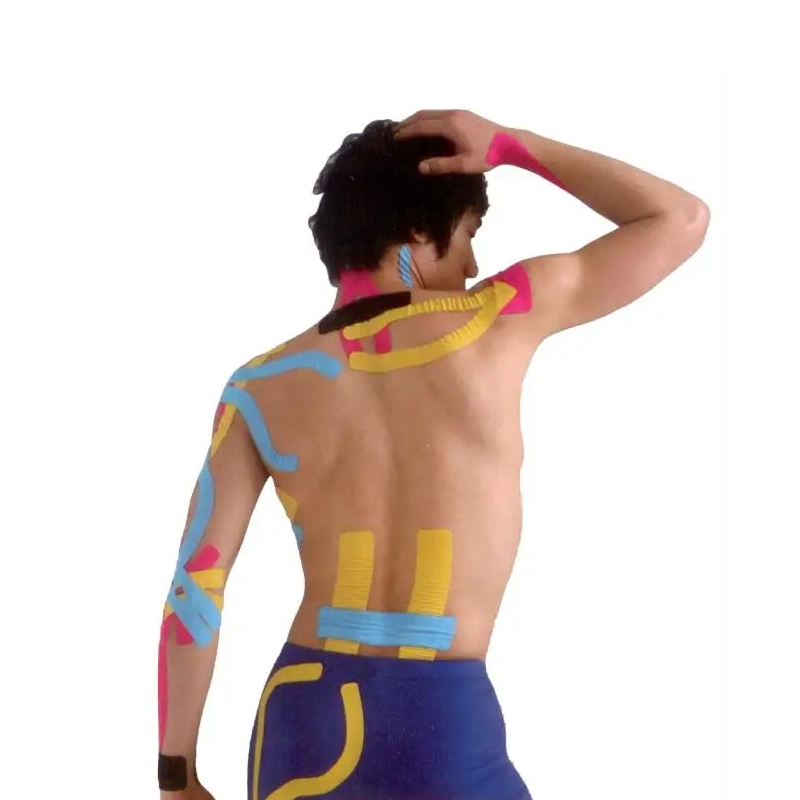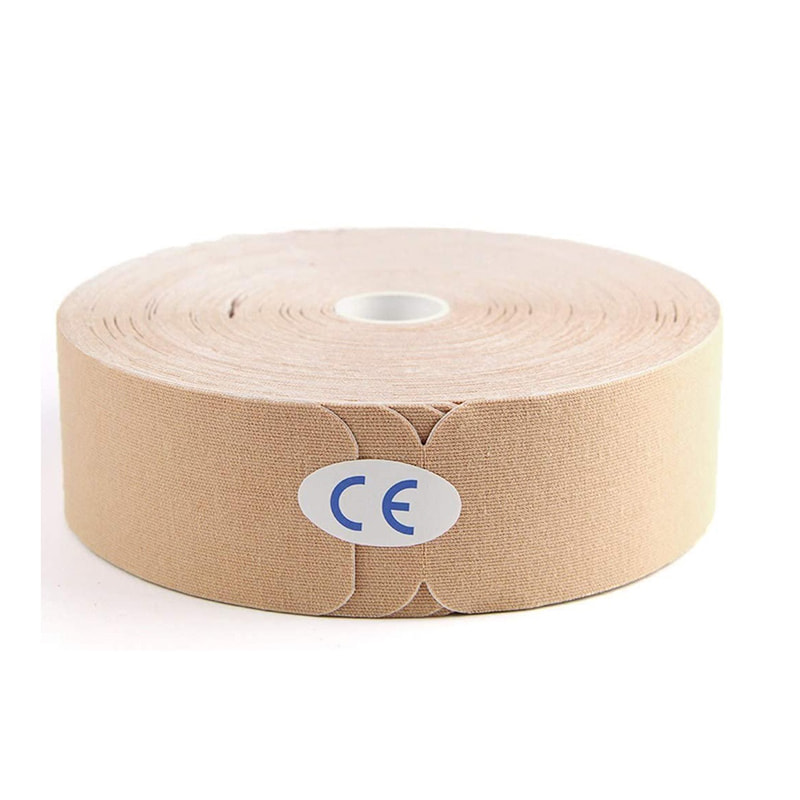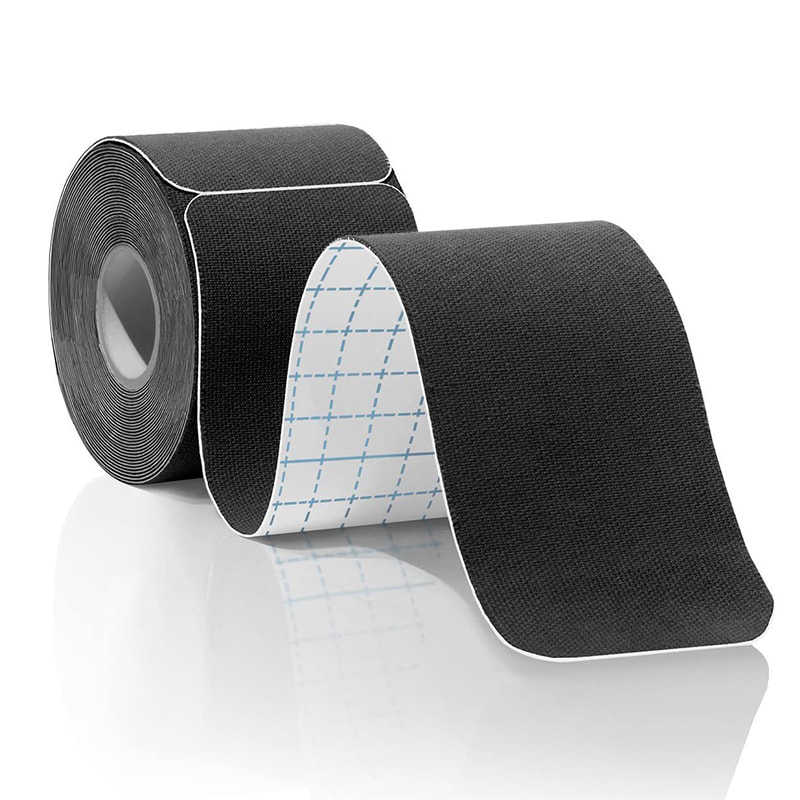Kinesiology tape often referred to as "k-tape," is a type of elastic therapeutic tape that has gained popularity in the sports world for its potential benefits in enhancing athletic performance and aiding in injury recovery.
Kinesiology tape's texture and elasticity can stimulate the skin, which may increase blood flow and lymphatic drainage, potentially reducing inflammation and promoting healing.By providing light support to muscles, kinesiology tape can help reduce muscle fatigue and soreness, allowing athletes to perform at a higher level for longer periods.The tape can be applied in a way that supports joints, potentially reducing the risk of injury by providing additional stability without restricting movement.

Kinesiology tape by lifting the skin, the tape may reduce pressure on pain receptors in the skin, which can alleviate pain and discomfort.The tape can provide proprioceptive feedback to the brain, which may help with motor control and coordination.
Kinesiology tape by supporting muscles without restricting movement, kinesiology tape can help athletes maintain or even improve their range of motion during physical activity. The support provided by the tape can help delay the onset of muscle fatigue, allowing athletes to perform at a higher intensity for longer. The increased blood flow promoted by the tape can help deliver more oxygen and nutrients to muscles, which can enhance performance and speed up recovery.
For athletes dealing with minor injuries or chronic pain, kinesiology tape can provide a non-pharmacological method of pain relief, allowing them to continue training and competing. The act of taping can provide a psychological benefit, as athletes may feel more secure and confident in their ability to perform, which can positively affect their performance.

The effectiveness of kinesiology tape may also depend on factors such as the specific application technique, the athlete's individual physiology, and the nature of the sport or activity.
The benefits of kinesiology tape are highly dependent on the correct application technique. Improper application can lead to reduced effectiveness or even discomfort.Not all athletes may respond to kinesiology tape in the same way. Some may experience significant benefits, while others may notice little to no effect.

Kinesiology tape is often used as a complementary therapy alongside other treatments such as physical therapy, massage, and strength training. It is not a standalone solution for improving performance or treating injuries.In some regions, kinesiology tape may not be regulated as a medical device, which can lead to variability in quality and effectiveness between different brands and products.
Kinesiology tape has the potential to positively affect athletic performance by providing support, reducing pain, and improving circulation. However, its effectiveness can vary greatly depending on the individual and the specific application. Athletes and coaches should consider kinesiology tape as one tool in a comprehensive approach to performance enhancement and injury management, and should consult with healthcare professionals to determine the best use of tape in their training and competition routines.


 English
English Español
Español русский
русский Français
Français Deutsch
Deutsch By Admin
By Admin

























